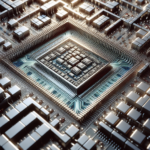Understanding the Impact of CPU on Augmented Reality Experiences
Understanding the Impact of CPU on Augmented Reality Experiences
Augmented Reality (AR) has rapidly evolved from a futuristic concept to a tangible technology that is transforming various industries, from gaming and entertainment to healthcare and education. At the heart of delivering seamless and immersive AR experiences lies the Central Processing Unit (CPU). This article delves into the critical role of the CPU in AR, exploring how it influences performance, user experience, and the future of AR technology.
The Role of the CPU in Augmented Reality
What is a CPU?
The Central Processing Unit (CPU) is often referred to as the “brain” of a computer. It is responsible for executing instructions from programs, performing calculations, and managing data flow within the system. In the context of AR, the CPU plays a pivotal role in processing the complex algorithms and data required to create and maintain augmented environments.
Core Functions of the CPU in AR
In AR applications, the CPU is tasked with several critical functions:
- Data Processing: The CPU processes vast amounts of data from sensors, cameras, and other input devices to create a coherent AR experience.
- Rendering: While the GPU (Graphics Processing Unit) handles the bulk of rendering tasks, the CPU coordinates these efforts, ensuring that graphical elements are correctly positioned and displayed.
- Tracking and Mapping: The CPU processes data from motion sensors and cameras to track the user’s movements and map the physical environment in real-time.
- Interaction Handling: The CPU manages user interactions, such as gestures and voice commands, ensuring that the AR system responds accurately and promptly.
Impact of CPU Performance on AR Experiences
Latency and Responsiveness
One of the most critical aspects of AR is the system’s ability to respond in real-time. High latency can lead to a disjointed and frustrating user experience. The CPU’s performance directly impacts latency, as it must quickly process input data and execute instructions to update the AR environment. A powerful CPU can significantly reduce latency, resulting in smoother and more responsive AR interactions.
Frame Rate and Visual Quality
The frame rate, measured in frames per second (FPS), is crucial for maintaining a fluid and immersive AR experience. A higher frame rate ensures that the AR content appears smooth and lifelike. The CPU’s ability to handle complex calculations and data processing affects the frame rate. A more capable CPU can maintain higher frame rates, even when rendering detailed and dynamic AR scenes.
Power Consumption and Heat Management
AR applications are often run on mobile devices, where power consumption and heat management are significant concerns. A high-performance CPU can handle AR tasks more efficiently, reducing the overall power consumption and heat generation. This is particularly important for prolonged AR sessions, where excessive heat can degrade performance and user comfort.
Optimizing CPU Performance for AR
Choosing the Right CPU
When selecting a CPU for AR applications, several factors should be considered:
- Core Count: More cores can handle multiple tasks simultaneously, improving overall performance.
- Clock Speed: Higher clock speeds enable faster data processing and execution of instructions.
- Architecture: Modern CPU architectures offer better performance and efficiency, making them ideal for AR applications.
Software Optimization
Optimizing software to leverage the full potential of the CPU is crucial for enhancing AR performance. This includes:
- Efficient Coding: Writing optimized code that minimizes CPU load and maximizes performance.
- Parallel Processing: Utilizing multi-threading and parallel processing techniques to distribute tasks across multiple CPU cores.
- Hardware Acceleration: Leveraging hardware acceleration features to offload specific tasks to dedicated hardware components, such as the GPU.
Future Trends in CPU Development for AR
Advancements in CPU Technology
The future of AR is closely tied to advancements in CPU technology. Emerging trends include:
- Increased Core Counts: CPUs with more cores will enable better multitasking and parallel processing capabilities.
- Improved Power Efficiency: Advances in semiconductor technology will lead to more power-efficient CPUs, extending battery life for mobile AR devices.
- Integration with AI: CPUs with integrated AI capabilities will enhance AR experiences by enabling more sophisticated data processing and decision-making.
Impact of 5G and Edge Computing
The rollout of 5G networks and the adoption of edge computing will also influence the role of CPUs in AR. With faster data transfer rates and reduced latency, 5G will enable more complex and data-intensive AR applications. Edge computing will allow some processing tasks to be offloaded to nearby servers, reducing the burden on the CPU and improving overall performance.
FAQ
How does the CPU differ from the GPU in AR applications?
While the CPU handles general-purpose processing tasks, the GPU is specialized for rendering graphics. In AR applications, the CPU processes input data, manages system resources, and coordinates tasks, while the GPU handles the rendering of 3D graphics and visual effects. Both components work together to deliver a seamless AR experience.
Can a weak CPU bottleneck an AR application?
Yes, a weak CPU can bottleneck an AR application by limiting its ability to process data and execute instructions efficiently. This can result in higher latency, lower frame rates, and a less responsive user experience. Ensuring that the CPU is powerful enough to handle the demands of the AR application is crucial for optimal performance.
What are some examples of AR applications that require high CPU performance?
High-performance AR applications include:
- AR Gaming: Games that require real-time tracking, rendering, and interaction.
- Industrial AR: Applications used in manufacturing and maintenance that require precise tracking and data processing.
- Medical AR: Applications used for surgical planning and training that require high accuracy and real-time data processing.
How can developers optimize their AR applications for better CPU performance?
Developers can optimize their AR applications by:
- Writing Efficient Code: Minimizing CPU load through optimized coding practices.
- Utilizing Multi-threading: Distributing tasks across multiple CPU cores to improve performance.
- Leveraging Hardware Acceleration: Offloading specific tasks to dedicated hardware components, such as the GPU.
Conclusion
The CPU plays a vital role in shaping the quality and performance of augmented reality experiences. From processing data and rendering graphics to managing user interactions and tracking movements, the CPU is at the core of delivering seamless and immersive AR applications. As technology continues to advance, the development of more powerful and efficient CPUs will unlock new possibilities for AR, enhancing its impact across various industries. By understanding the importance of the CPU and optimizing its performance, developers and hardware manufacturers can ensure that AR experiences are both engaging and effective.




